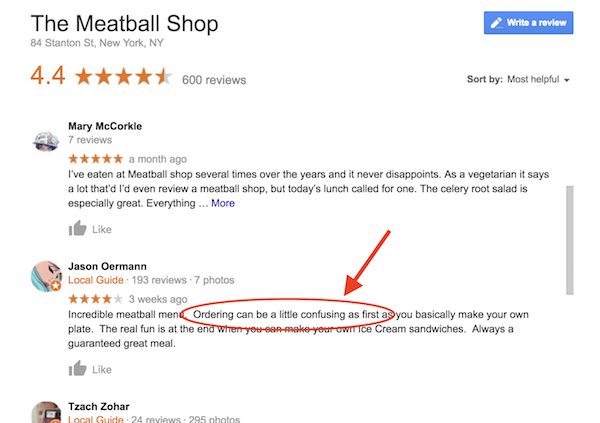So, I just read a fascinating study that could help you sell more…
…especially if you suffer from “offer envy” because your product has a minor downside.
First off, I want to make one thing clear:
I say “downside” but I don’t mean BAD products.
I’m not talking about products that don’t work at all.
What I’m talking about are good products that have a small flaw, a slight disadvantage, or a minor missing feature compared to an alternative.
And let’s be real:
No product is perfect.
I say that and I love all my products. From Zippy Courses to all my premium training courses. They’re all GREAT products.
Could they be even better?
Probably.
And my team and I are constantly working on that.
I imagine that you’re in a similar situation.
You stand behind your product 100%.
But you’re also aware of how it could be improved.
Sometimes this can lead to what I call “offer envy.”
It’s that feeling when your competitors make a great move. Or release a great new feature that you wish your product had as well.
If you’ve ever felt offer envy, keep reading.
You’ll find the surprising results from this Stanford study I’m about to share VERY useful…
I’ll explain.
The Blemishing Effect: What Is It?
Take a look at the reviews for this NYC meatball spot:

“It’s great BUT…”
As you can see, the overall rating is 4.4.
So, good reviews overall.
When you look at the first review it’s ALL positive:
The place apparently “never disappoints.” It’s even “great for a vegetarian.” And the “celery root salad is especially great.”
5 stars – cool.
The second review is good, too. But it only has 4 stars. What’s the problem?
“Ordering can be a little confusing at first”
I can’t read a restaurant menu for the life of me. So, I’ll consider that a pretty minor flaw. And that’s exactly the kind of thing I’m talking about here.
Other examples could be…
- Your software doesn’t easily integrate with 37 other apps.
- Your turnaround times is slightly longer than your big competitors.
- Your shirts are only available in a few colors.
Now…
Our intuition tells us that this makes people LESS likely to go to this restaurant. I mean, it would be BETTER if the menu was super easy to read, right?
WRONG.
At least, under specific circumstances.
Researchers from Stanford and Tel Aviv University discovered what they called the “Blemishing Effect”.
Here’s how they define it:
Adding a minor negative detail in an otherwise positive description (…) that can give that description a more positive impact or make it seem more positive.
Weird.
But the researchers tested their hypothesis in a series of experiments.
The result?
The Blemishing Effect seems to hold up.
However…
There are TWO important conditions.
So, let me walk you through the experiments.
You’ll see exactly when you should – or shouldn’t – count on “minor flaws” to work in your favor.
Sometimes Minor Flaws Are Good (But Not Always)
In the first experiment the product in question was a pair of hiking boots:
First, the participants were divided into two groups. The first group was presented with a list of positive features of the hiking boots:
- Designer orthopedic sole to protect feet that comes in many colors
- Waterproof
- 5-year warranty
- Includes 2 spare shoelaces
The other group saw almost the same features… with a small change:
- Designer orthopedic sole to protect feet that comes in only two colors
- Waterproof
- 5-year warranty
- Includes 2 spare shoelaces
So, for this second group, the description said that the boots were available in “only two colors” instead of “many colors.”
That was the “blemish” in the description.
But there was another twist…
The researchers deliberately “distracted” half of the participants. That way, they could separate people into a “low effort” and a “high effort” group.
In other words, the “low effort” group had a lower capacity to fully process all the information about the hiking boots (because they were distracted).
Then, the experiment tested the purchase intentions for both groups.
And what was the result?
The high-effort group made the rational choice. They preferred the boots that were available “in many colors.”
BUT…
The low-effort group showed HIGHER purchase intent for the “blemished” boots.
This is the first important condition:
The Blemishing Effect is only true if people show relatively low effort. So, it’s probably not as relevant for really big purchases.
But it does apply to many situations where people are not thinking about their purchase THAT much. So, usually, that’s lower priced items (relative to your customers’ income).
Now…
I was skeptical of this first result. The experiment only asked people about their purchase INTENT.
People didn’t actually have to BUY the product.
But…
In a second experiment, the study tested the effect in the field:
The result was the same.
The low-effort group BOUGHT more of the “blemished” product, too.
How strange!
WHY in the world do people prefer the inferior offer?
The researchers had a theory…
So, they tested it in another experiment:
This time, they used a picture of slightly damaged packaging as the “blemish.”
And what they tested was the ORDER in which they presented the positive and negative information:
To one group, they showed the damaged packaging first, followed by a list of positive features. The other group saw the positive features first, followed by the image of the damaged packaging.
The Blemishing Effect only appeared in one of the two groups.
The effect was only there when people saw the POSITIVE features FIRST.
The explanation for the result is interesting:
In a low-effort setting, people see the positive info first. Then they see the minor flaw. But they don’t discount for it. Instead, it creates contrast and makes them notice the positive effects MORE.
Rather than doing the careful calculation, people fall back on the information they heard first. So, by adding the small flaw, the impact of the positive features was bigger.
It’s pretty well-known that people can recall information that they see first better than information that they see later on. And the Blemishing Effect is a result of it.
The question now is…
What Does This Mean for You?
To recap, the Blemishing Effect says:
A product description with a minor negative detail has a bigger impact than an all positive description.
But ONLY if there’s the positive information comes first.
(There can be more positive info after the negative detail, too. So, the “flaw” shouldn’t come last.)
And ONLY in situations where people put in relatively low effort to decide.
Does this apply to what you sell?
Then for you, this means…
If your product or service has a minor flaw, don’t hide it!
Instead, mention the downside in your product description, too.
Don’t put it front and center, though. You should lead with the strongest benefits.
But then, science suggests, ALSO mention the minor flaw.
I think this is good news:
It means you don’t have to stress out about “offer envy.”
You also don’t have to put yourself in an uncomfortable situation where you’re hiding information from your customers (hint: it’s never a good idea).
Now, I’m curious to hear what you think.
Do you think the Blemishing Effect could apply to your business?
Are you going to test it?
Leave a comment and let me know what you think.








Interesting but a little confusing (to me). It’s not clear how we are supposed to ‘distract’ the prospect, or what exactly constitutes low effort vs high effort.
I do get the part about the positives being more credible if a minor negative is thrown in.
I’ve never heard of the blemishing effect until now. And that’s exactly the reason why I visit your website & read your blogposts, Derek.
The “Before-and-After-Brigde”-Technique already improved my writing, so I’ll definitely try and see if I get better results with this strategy as soon as I launch my product.
Thanks for your effort, my man.